A beautiful tree with a light brown trunk and large oval leaves. Each leaf with prominent veins and dark green colour- just like the artwork by a young child holding the sketch-pen for the first time! The flowers have much sophisticated colour combination- the bowl of fleshy greenish sepals holds the clean white petals, wearing a crown of yellow stamens. The fruits start appearing in June-July, which has given the name to this tree- Elephant Apple Tree! The tree no doubt serves the wild elephants, but in the name of an elephant, every animal and plant (as well) enjoys this tree’s company! Right from the bees to the most wise human, everybody loves this truly Indian tree, scientifically named Dillenia indica!
The Elephant Apple D. indica is spread over all India, along with its brother D. pentagyna. But its true value is recognised in Northeast India. With the local name ‘Chalta Tenga’, the tree is recognised by everybody. The tangy fruits are used for chutney, a taste enhancer in regular meals. For its sour test, it’s used along with other vegetables and dal in the curries as well. Having a Chalta Tenga is a kind of pride for the owner. Like a family member, it serves with leaves, fruits, and, unfortunately, timber as well when in need.
I have a wonderful tree in my neighbourhood- in Guwahati. The tree is quite old, huge and still vigorous. It celebrates every season passionately. In April, it loses all the heavy leaves, and soon, next month, it gathers flower buds and new leaves. The white flowers appear distinctively against the contrast of the dark foliage. It won’t take much time to appear the ‘apples’ – the large fruits. In the jungles, these trees spread a carpet of fruit on the ground below, which supports elephants, deer, wild boars and all. In the urbanised areas, they are relished by cattle, humans and occasional troops of monkeys. I feel like it is the elderly family member. And don’t know how much it enjoys itself, but its friends and family enjoy the seasonal changes in its presence only.
With its dense foliage, the tree hides many secrets. So many birds play, dance and chirrup on its branches. The branches are thick and huge. In between the branches and the main trunk, there is a natural pit. It is occupied by a pair of Brown Hawk Owl. Every evening, the tree has an alarm clock that tells us it’s 5 o’clock in the evening! The mysterious ooo woke-ooowok call could be heard, but you can’t see the bird! But being fortunately close enough to a tree, one day it shared the secret- Three lovely owl nestlings appeared on its upper branch. The young ones were taken care of by their parents by feeding them geckos and insects, all available in the housing complex of the Dillenia tree. The Hoary bellied squirrel looked at the family suspiciously, the Tree pie gave alarm calls – but in their Dillenia housing complex, the owl family stayed unbothered!
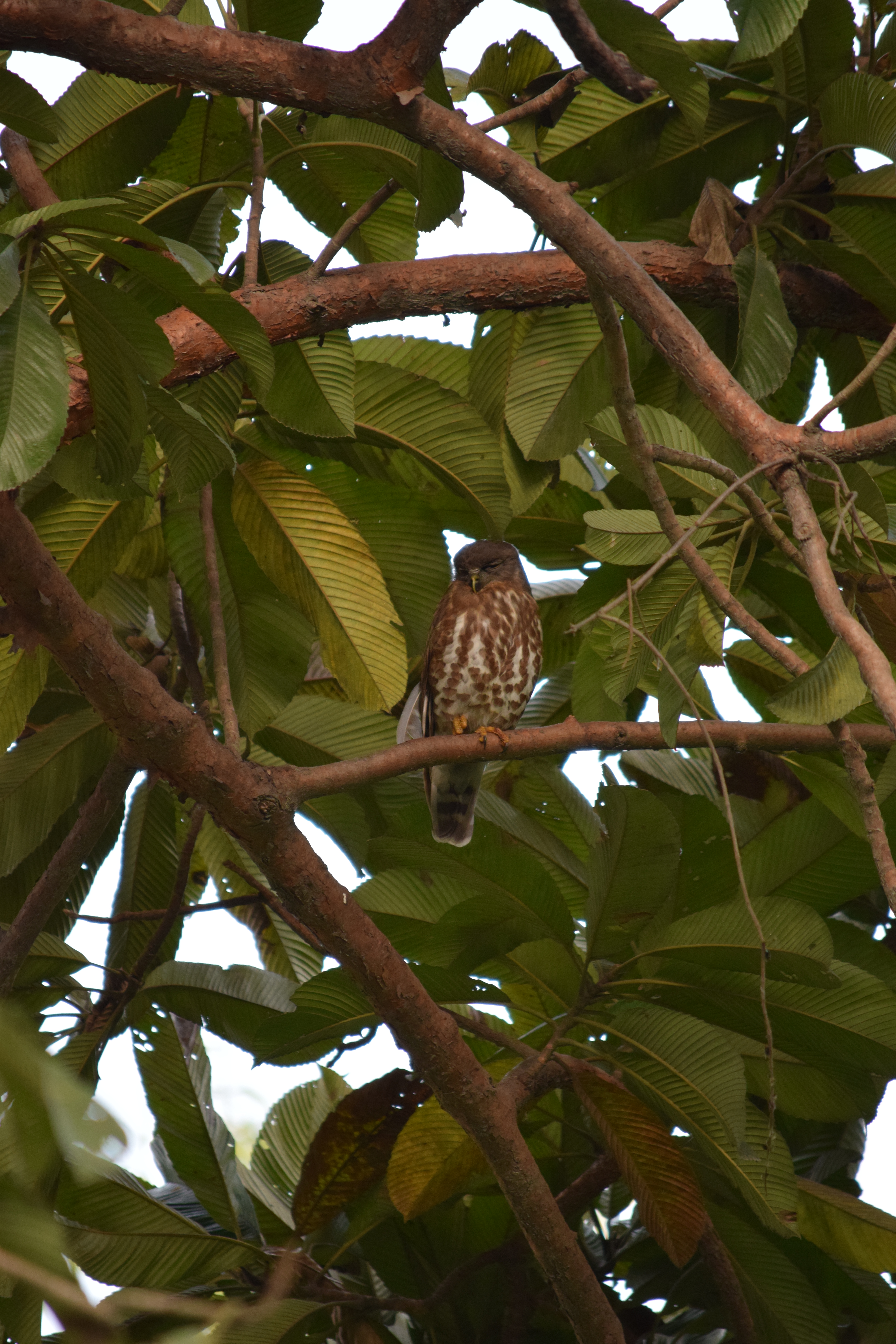
A Brown Hawk Owl resting peacefully in the Dillenia tree
It’s not only the animal world that takes advantage of this tree, but the members of the plant kingdom, the epiphytes, too, have an elevated lifestyle because of this tree. They are literally sitting on its shoulders for a lifetime! Tolypanthus involucratus is one such epiphyte for a botanist, a loving grandchild of the Dillenia tree for a storyteller. The epiphyte is mostly recorded on the Dillenia species only. Here it grows, flowers and nourishes other life forms – the Birds! Tiny Scarlet- backed Flowerpecker feeds on the sticky fruits of the epiphyte and spreads the seeds to new Dillenia, and the cycle goes on …
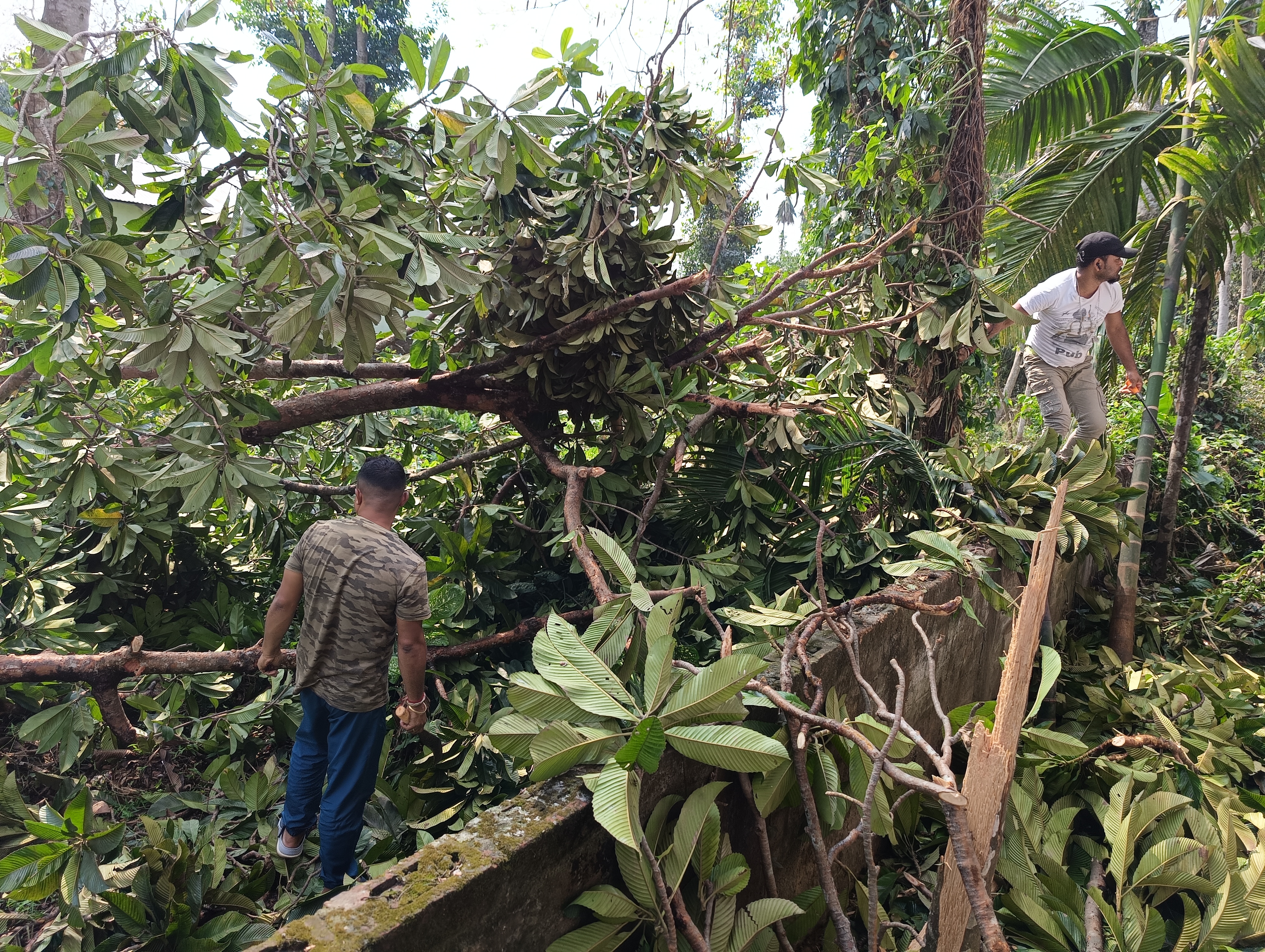 Fallen branches of the Dillenia tree
Fallen branches of the Dillenia tree
And last year, when the pre-monsoon thunder shower troubled the tree community, this old tree lost its couple of heavy branches. I took it as an opportunity to collect small cuttings of branches which were otherwise unreachable. These cuttings were then planted systematically in the used tetra packs (of milk and juices) and plastic bags. Some of the cuttings got roots and survived to spread the happiness further. These are now planted in the nearby reserve forest patches- expecting they will serve one day to the wild elephants! These new plants are now ready to sustain the legacy of their legendary mother tree- the Elephant Apple Tree.
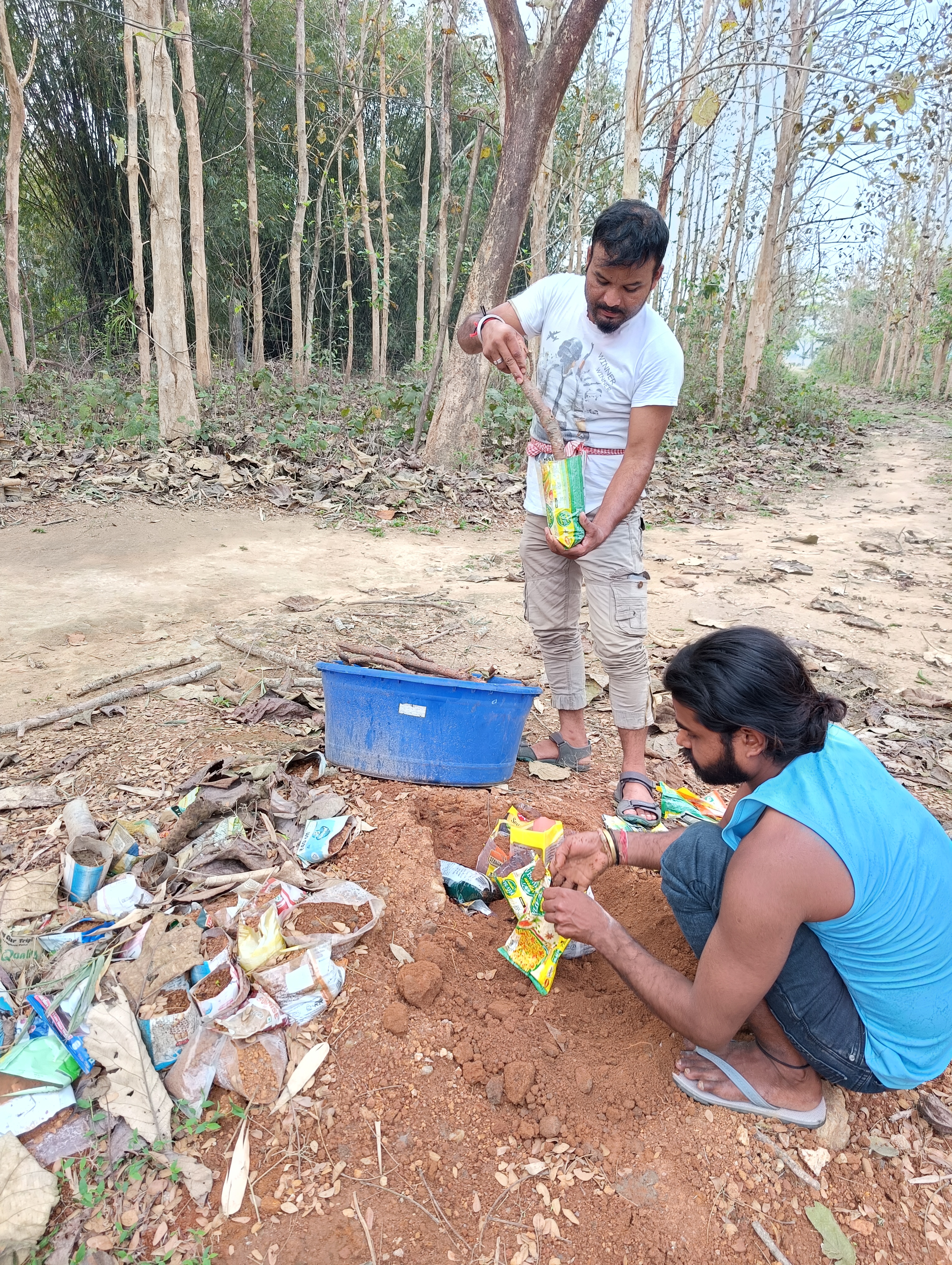 Cuttings are planted for a new beginning
Cuttings are planted for a new beginning
About the author: Sachin Ranade has been working for Vulture Conservation (BNHS) for the last twenty-five years.

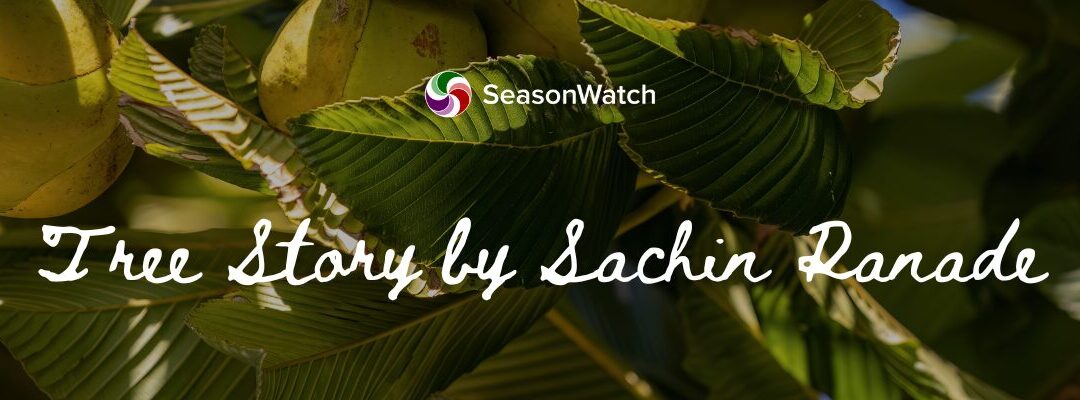




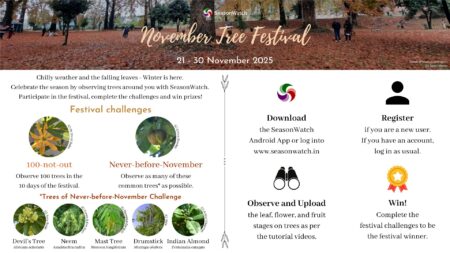
Beautiful story
The article contains much information about habitat conservation of wildlife especially elephants and stamp cutting regeneration being planted in reserve forest patches have been a great deal to serve wild elephants.
Thanks for your warrior efforts to serve mother nature 👍